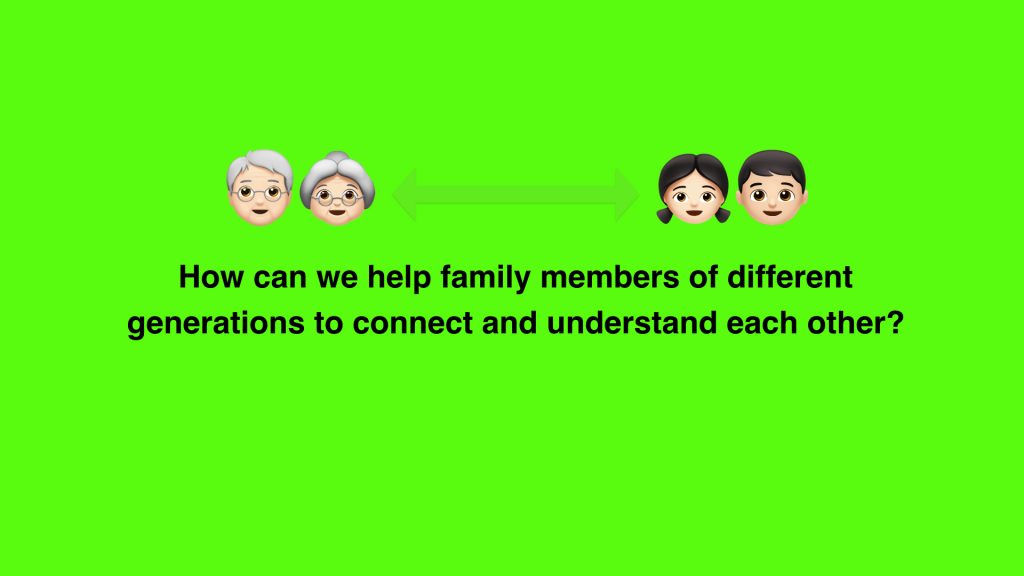
here is their seat arrangement in their family:
Laissez-faire type:

Pluralistic type:

Consensual type:

Protective type:

Reflection
From the previous research, it was found that Protective type and Laissez-faire type lacked communication, and during the discussion, I found that in these two type family, there is usually a seating arrangement at the dining table. Their seats are arranged according to the family seat, but this is unconscious
In the other two types:Consensual and Pluralistic, they rarely have fixed seats, and they do not arrange seats according to family status. They communicate more with their family members, less conflicts, and have a good relationship with family members.
So I think the seat arrangement and family status and rights hinder the communication between children and parents to some extent, and Communication will be affected by power. If I want to promote communication between different generations, I must first make them aware of this problem. So how can we make people aware of this problem? This will be my next intervention
Next step and ideas:
My previous interventions focused on how to reduce the conflict between different generations, but I found that communication is a long-term process,this problem cannot be changed in the short term. And I also found that if two people disagree, you can hardly expect a decent response from the other person. Normally, he will defend himself and try to lead your thinking and judgments astray. A few months later, when the old words are brought up again, you will find that no one has changed their minds, as if the previous argument has never happened.
So in the next intervention, I will first throw a question or point of view to the other person, let him think or study carefully, don’t worry about asking the answer, let him digest it in his mind first, and challenge his original concept. ( inspired by the book: The Skeptics’ Guide to the Universe)
I will design a dining table. This is not an ordinary dining table, but a dining table that can reflect the status of the family. I will place it downstairs in my house or in the park, so that people passing by can think about the meaning of the dining table, and interview their feelings. I will make the next intervention based on the feedback I get.
